
John Ford is famous for his Western films, but he was also a highly skilled director of war movies. Beyond his talent, Ford was a veteran himself, having left Hollywood to serve as a commander in the U.S. Navy Reserve during World War II. While serving, he created propaganda films for the United States.
After leaving the military, he became more critical of how war was portrayed in films. He began directing his own war movies that showed a darker, more realistic side of conflict, and also offered fresh takes on the American West, including stories about the Civil War. These Westerns, combined with his other work, firmly established John Ford as one of the greatest directors of all time.
10. Four Sons (1928)

Released in 1928, Four Sons was one of director John Ford’s first films about war. While it didn’t have spoken dialogue, it wasn’t a completely silent movie thanks to its synchronized musical score. John Wayne appeared in a small, uncredited role as a military officer in the film—more than ten years before he became a star with Stagecoach.
This movie tells the story of a Bavarian family deeply affected by World War I. One son emigrated to America and joined the American Expeditionary Forces, while his three brothers were drafted into the German army back home. The film highlights the devastating impact of the war on those left behind on the home front.
Only a handful of films made by John Ford between 1917 and 1928 still exist today, and Four Sons is one of them. It was saved by the Academy Film Archive in 1999. A different version of the story was made in 1940, but John Ford wasn’t involved.
9. The Lost Patrol (1934)

As a classic movie fan, I recently watched The Lost Patrol, a 1934 film directed by John Ford. It’s based on a novel by Philip MacDonald, and it really captures that pre-Code era feel. The story follows a British patrol riding through the desert in Mesopotamia. Things get tense when their leader is killed by a sniper, and suddenly, the men have no idea what they’re supposed to be doing or where they’re even going – they’re truly lost out there.
The film features a strong cast, including Boris Karloff, famous for his role as Frankenstein’s Monster, in an unusual non-horror part. Wallace Ford, Victor McLaglen, and Reginald Denny – all well-known actors of the time – also appear. While critics acknowledged The Lost Patrol wasn’t perfect, they considered it a classic and noted its significant impact on war films made throughout the 1930s.
The film received an Oscar nomination for its original music. It also has a perfect 100% rating on Rotten Tomatoes, and critics agree it deserves the praise.
8. Pilgrimage (1933)
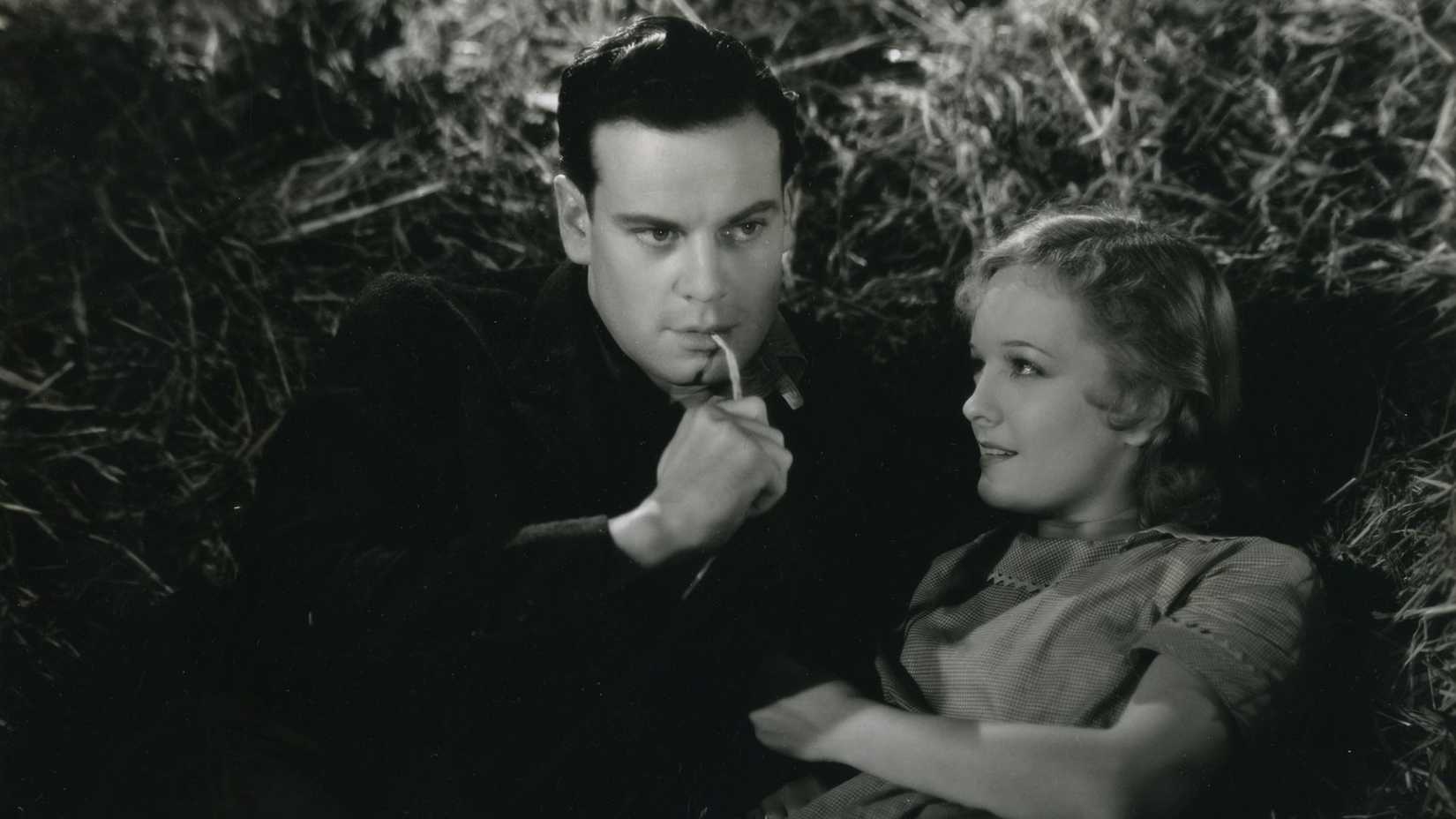
Released in 1933, Pilgrimage is an early war film directed by John Ford, made before the enforcement of the Motion Picture Production Code. Unlike some of his other work, it wasn’t well-received by critics when it first came out. The story centers around Mrs. Hannah Jessop, an Arkansas mother who disapproves of her son’s choice of wife and manipulates him into joining the Army during World War I.
I think this early film of his really shows you what John Ford was all about, and honestly, it’s one of the most beautiful movies he made in the ’30s. The story is heartbreaking – it’s about a mother who wants her son to serve in World War I instead of letting him marry the woman he loves, and of course, it doesn’t end well. It’s a real tragedy.
This film works well when viewed alongside Four Sons. Both movies feature a mother dealing with loss related to war, but in different ways. Four Sons shows a mother watching her sons die in battle, while Pilgrimage focuses on a mother grieving her son after pushing him to fight. Unlike the mother in Four Sons, who found solace in her surviving son, Mrs. Jessop experiences only grief and finds no peace.
7. Rio Grande (1950)
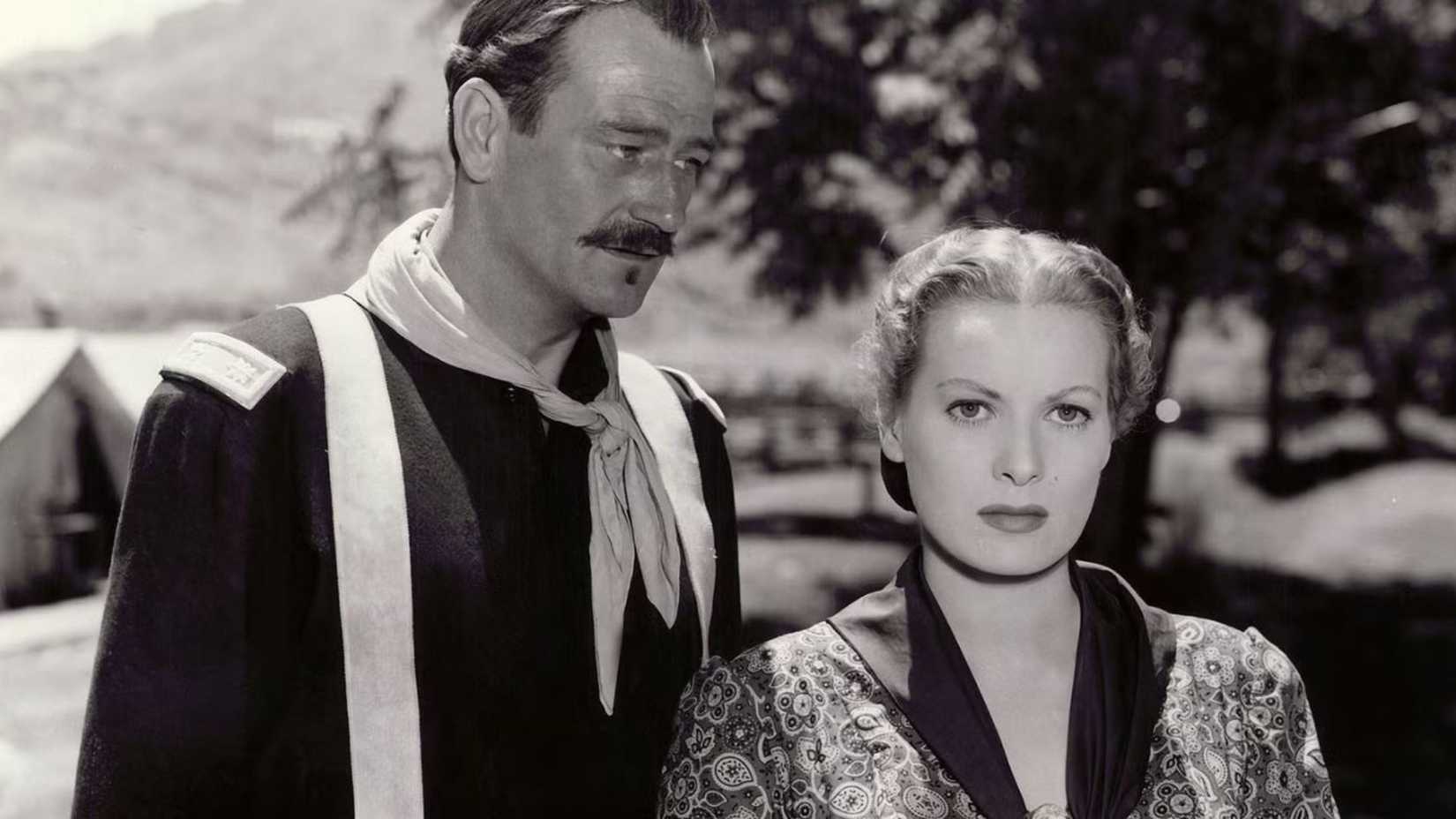
In 1950, director John Ford and actor John Wayne collaborated on the film Rio Grande. This movie was the third installment in Ford’s Cavalry Trilogy, following Fort Apache and She Wore a Yellow Ribbon. Interestingly, Ford wasn’t initially enthusiastic about making Rio Grande; the studio required him to complete it as a condition of allowing him to direct The Quiet Man.
No matter why it was made, Rio Grande is still a fantastic Western war film. It stars John Wayne as a soldier stationed on the Texas border who discovers his long-lost son, Jeff, is now under his command. The movie also features Maureen O’Hara, one of Wayne’s most memorable co-stars, playing his estranged wife.
Okay, so ‘Rio Grande’ isn’t quite on the same level as ‘Fort Apache’ or ‘She Wore a Yellow Ribbon,’ but don’t let that turn you off. It’s still a solid Western, and while it doesn’t have the same emotional weight or complex story you find in some of John Ford and John Wayne’s other films together, it’s absolutely worth a watch.
6. The Long Voyage Home (1940)
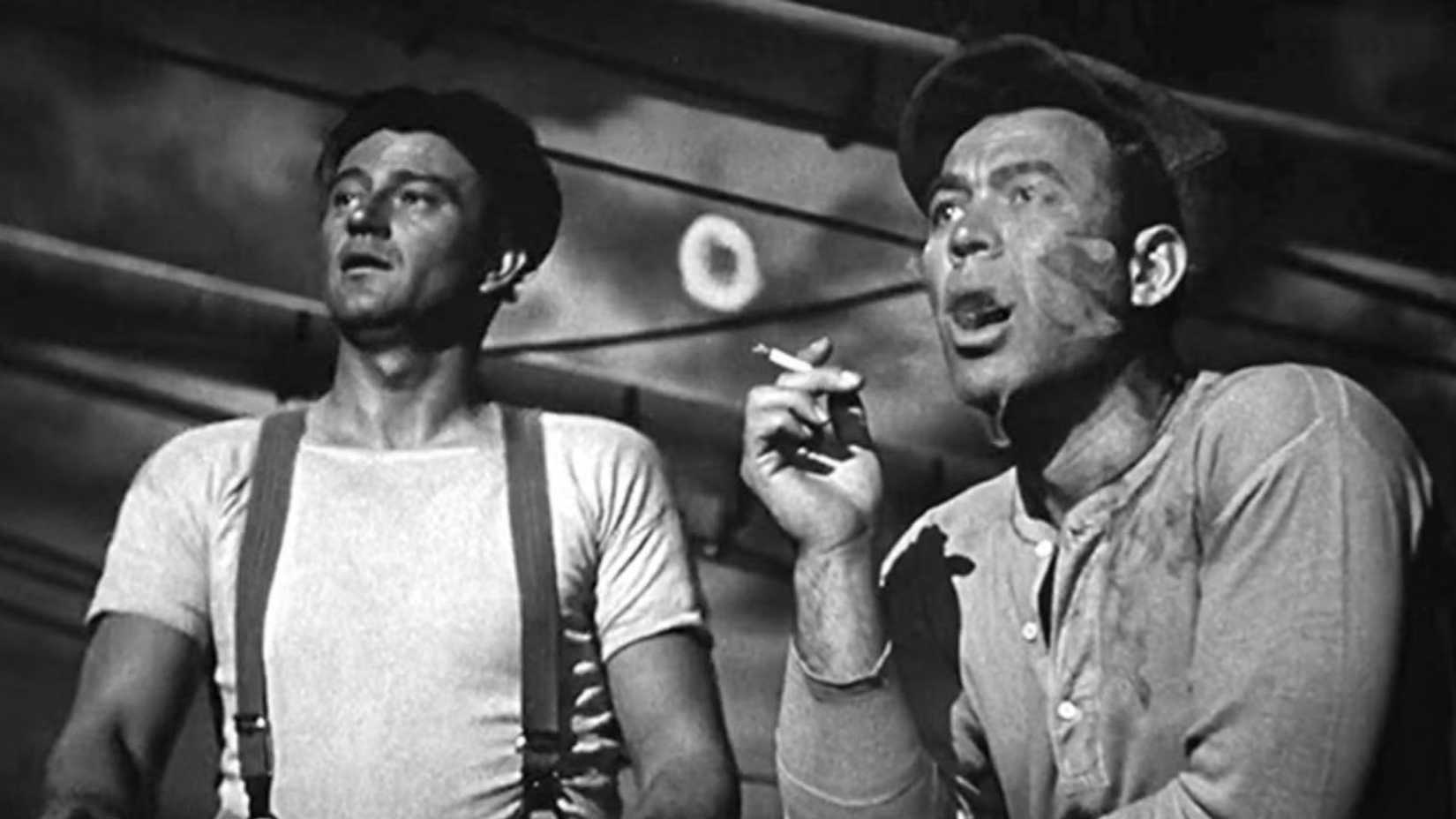
Released in 1940, just before John Ford joined the military, The Long Voyage Home started as a play written during World War I. Ford updated the story to reflect the beginning of World War II, and the film follows the journey of a British cargo ship returning from the West Indies during the war.
What sets this film apart is its unique visual style, a departure from director John Ford’s typical Westerns and earlier work. Many film experts think this innovative approach foreshadowed the look and feel of film noir, which became prominent in the 1940s.
When the movie first came out, it wasn’t a commercial success, likely because of its serious tone and absence of a love story. Despite this, critics loved the story, and some even drew parallels to the classic epic, The Odyssey. It boasts a perfect 100% rating on Rotten Tomatoes and received six Academy Award nominations, including one for Best Production Design recognizing the work of John Ford.
5. The Long Gray Line (1955)
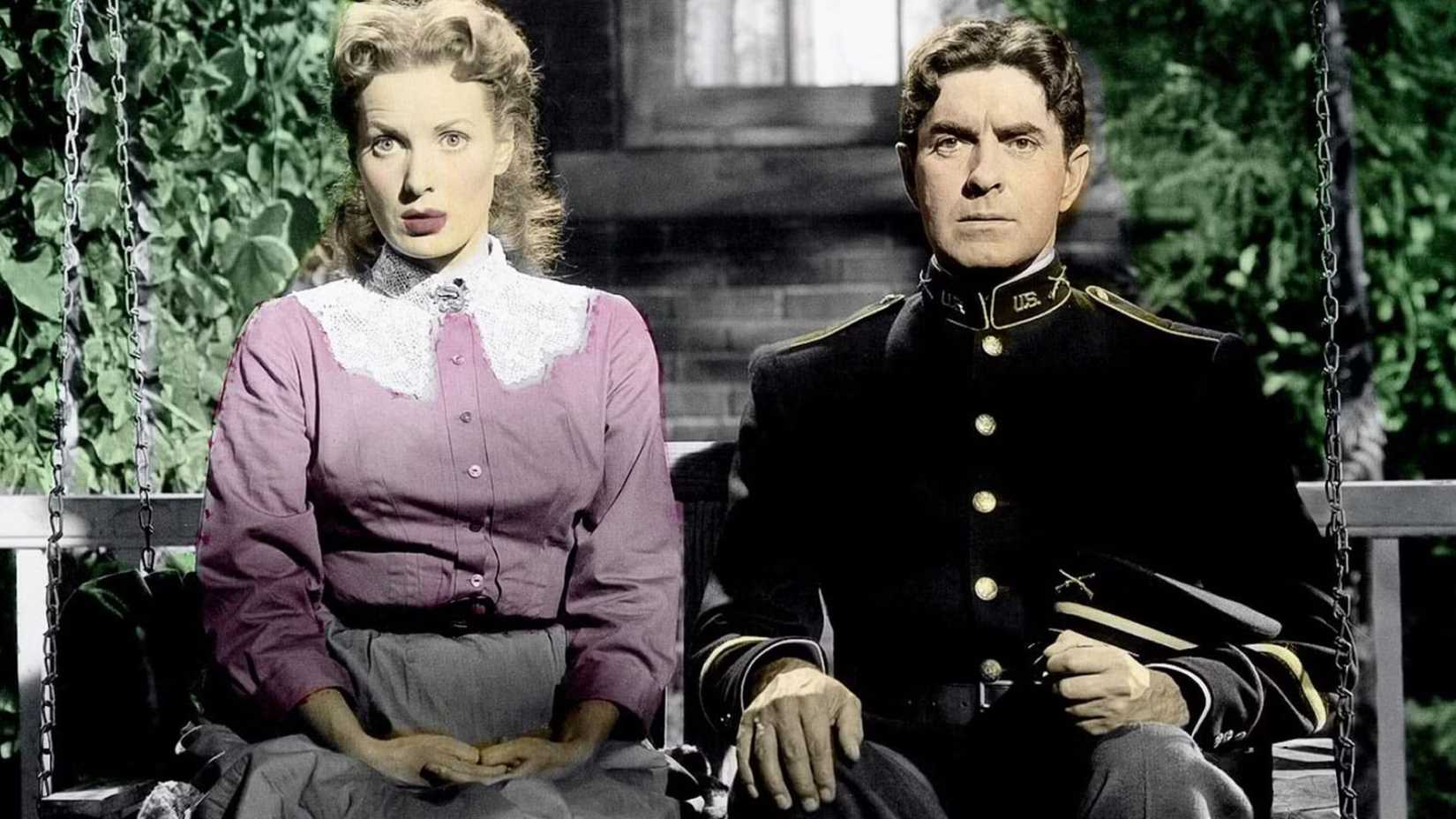
I recently learned about a fascinating movie called The Lone Gray Line, a war film directed by John Ford that came out in 1955. It tells the story of Marty Maher, played by Tyrone Power. He was an Irish immigrant who came to America and joined the Army back in 1898, eventually working his way up to become a master sergeant. It’s a really inspiring story!
Although John Wayne wasn’t in this particular John Ford film, Ford cast Maureen O’Hara as Mary O’Donnell, the wife and fellow immigrant, and frequent collaborator Ward Bond as Herman Koehler, a fencing master and football coach who becomes a friend. Western film icon Harry Carey Jr. also makes an appearance as Dwight D. Eisenhower.
Critics loved The Long Gray Line, giving it a 90% rating on Rotten Tomatoes. It’s still considered one of the best films to depict the rigorous training process at West Point and other military academies.
4. They Were Expendable (1945)
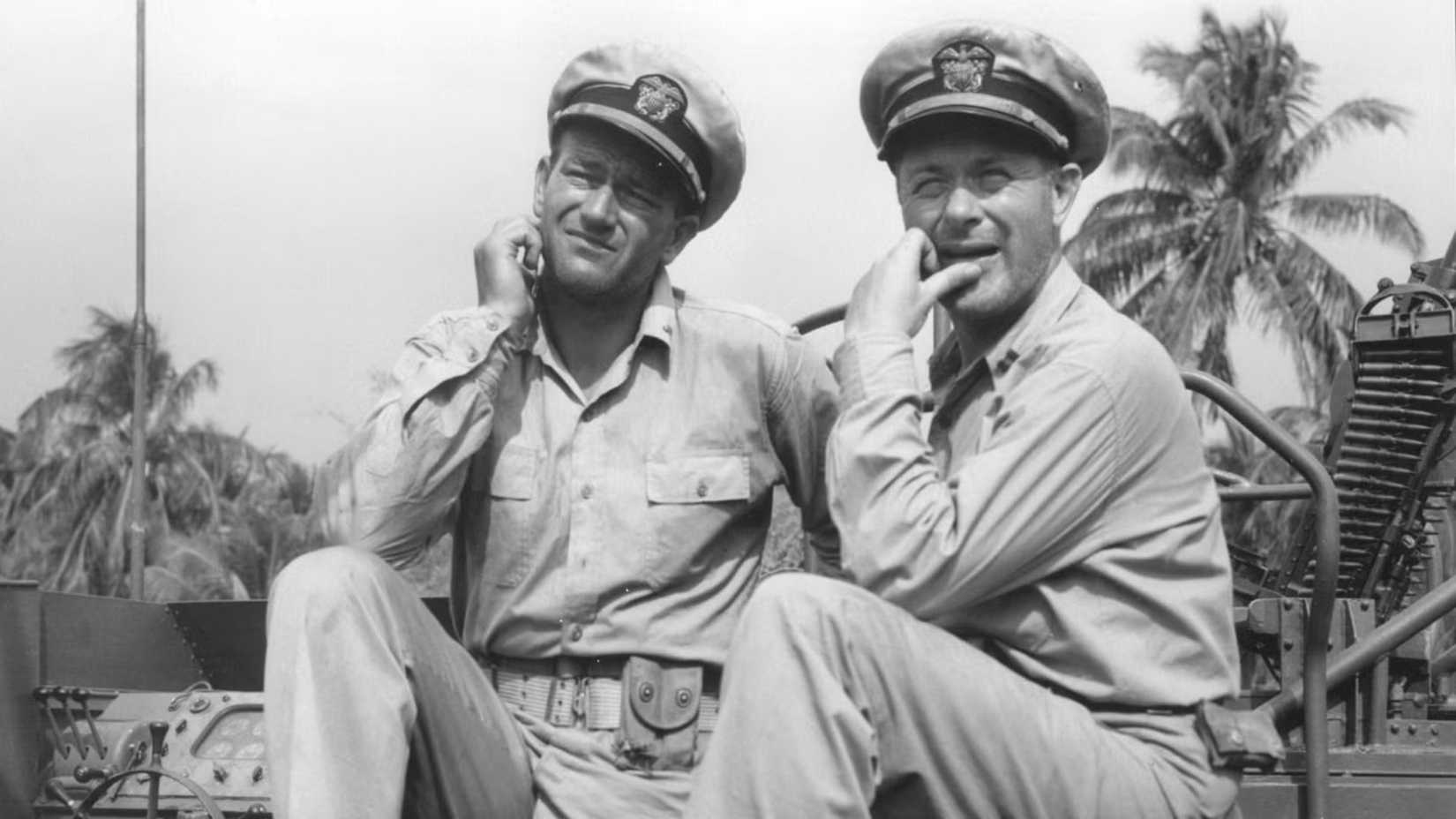
After completing his time in the military, John Ford returned home and began directing films that reflected a sense of disillusionment. This was particularly clear in his war movie, They Were Expendable, featuring Robert Montgomery and John Wayne. The film portrays the story of soldiers on a PT boat fighting to defend the Philippines from the Japanese invasion.
John Ford directed the film, which was based on a book by William Lindsay White. The Navy heavily supported the production, even listing Ford and screenwriter Frank Wead—a retired Navy Commander—with their naval ranks in the film’s credits. Ford was credited as ‘Captain U.S.N.R.’ and Wead as ‘Screenplay by Frank Wead Comdr. U.S.N., Ret.’
Despite being popular at the box office, the movie didn’t make a profit because it cost a lot to produce. It was also well-regarded during awards season, receiving nominations for Best Sound and Best Visual Effects at the Oscars.
3. Fort Apache (1948)

John Ford’s Fort Apache kicked off his famous Cavalry Trilogy and was adapted from the story “Massacre” by James Warner Bellah. The film features Henry Fonda as Lieutenant Colonel Owen Thursday, a character modeled after the historical figure George Armstrong Custer. The story begins when Thursday arrives at his new assignment and immediately clashes with Captain York, played by John Wayne, due to his prideful nature.
This war film follows two soldiers: one is full of himself and ignores the advice of those under his command, while the other understands the enemy but feels helpless to protect his troops. It’s a stark story about how a leader’s pride can lead to devastating losses in a pointless fight.
Fort Apache isn’t just a Western; it’s a story about how history can turn even flawed individuals into heroes by glossing over the truth. It also marks one of director John Ford’s earliest films to portray Native Americans in a more positive light. Widely considered a classic, the American Film Institute lists it among the greatest Westerns ever made, and it boasts a perfect 100% rating on Rotten Tomatoes.
2. Mister Roberts (1955)
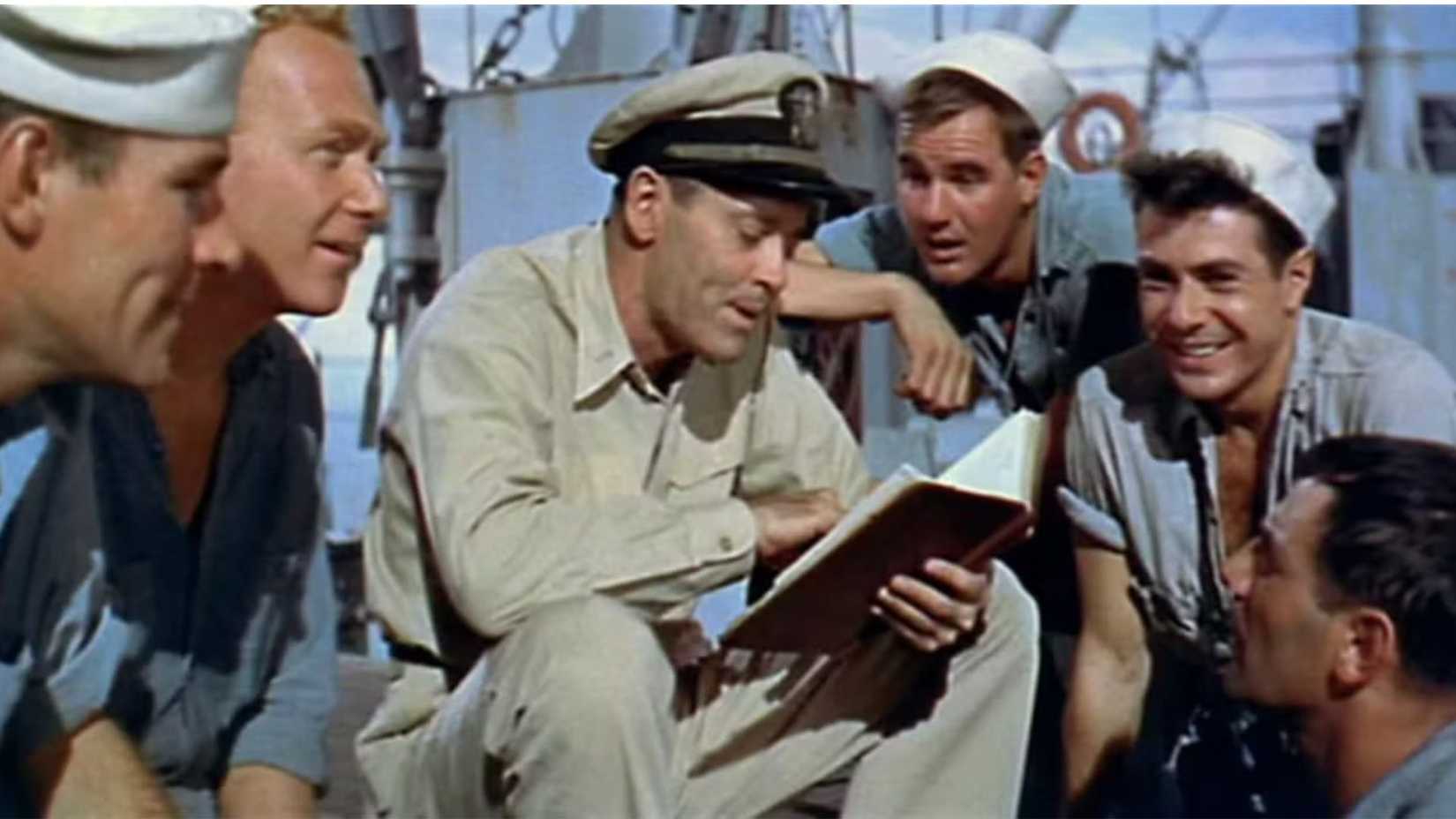
Released in 1955, Mister Roberts is a funny and moving war film starring a remarkable cast including Henry Fonda, James Cagney, William Powell, and Jack Lemmon. The movie, which was adapted from a popular novel and play, tells the story of a Navy cargo ship and its crew during the last months of World War II.
Henry Fonda stars as a ship’s officer working under the harsh Captain Morton, played by James Cagney. This isn’t a typical war film focused on combat; it’s a story about a soldier striving to do his best, even though his captain is constantly cruel and unsupportive.
The film Mister Roberts received three Academy Award nominations – Best Picture, Best Sound, and Best Supporting Actor, which Jack Lemmon won. It’s also been highly praised by critics, earning a 93% ‘fresh’ rating on Rotten Tomatoes, and is described as a poignant story about a beloved soldier and his crew.
1. She Wore a Yellow Ribbon (1949)
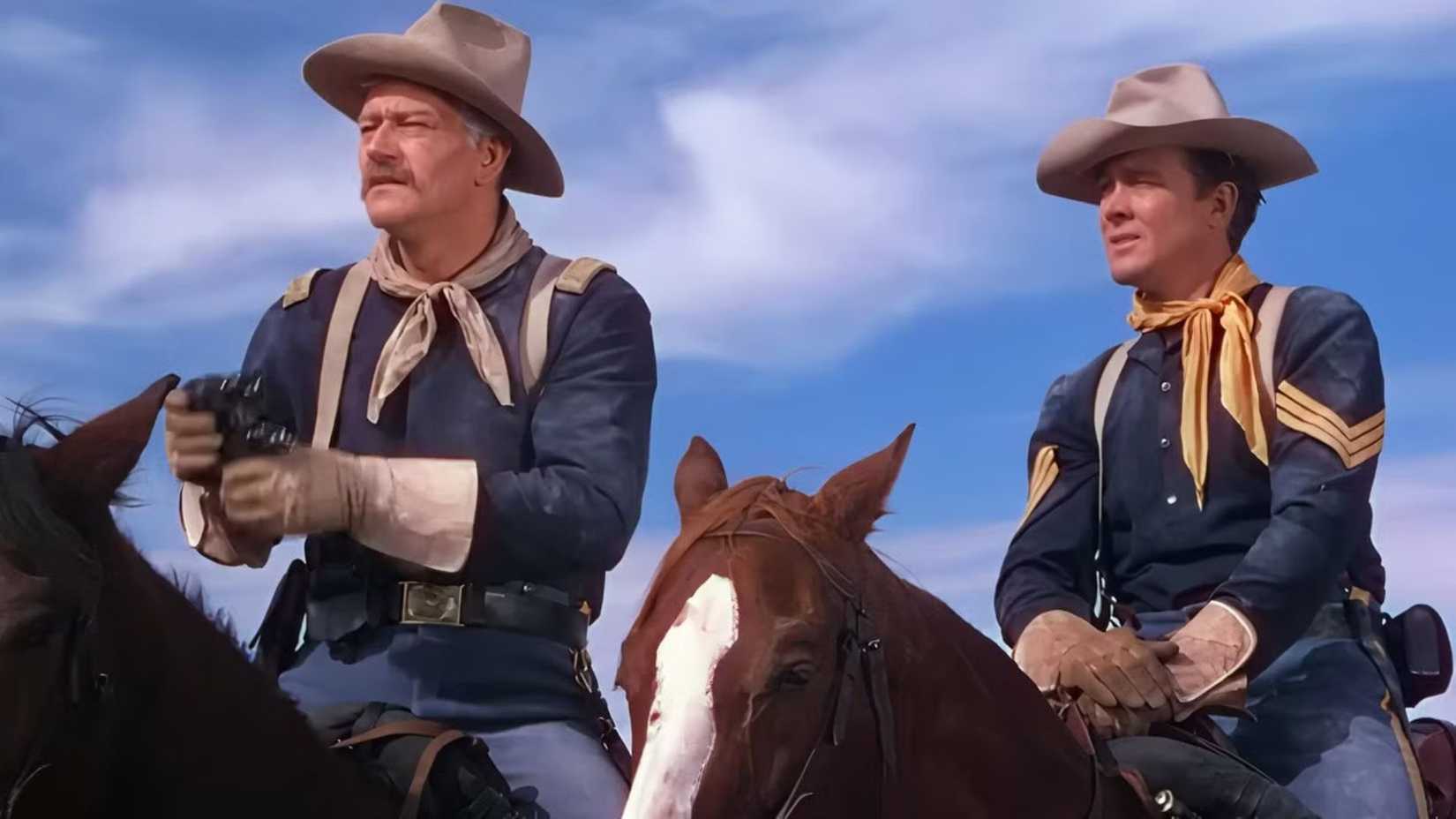
Many film fans and critics consider She Wore a Yellow Ribbon, the second film in John Ford’s Cavalry Trilogy, to be his finest war movie. It was highly regarded – General Douglas MacArthur reportedly watched it monthly. The film stars John Wayne as Captain Brittles, a soldier preparing for retirement.
Just as Brittles was about to retire, he receives one last, unavoidable assignment. He’s ordered to venture into dangerous territory to prevent a potential new conflict with Native Americans, sparked by the recent massacre of Custer’s troops at the Battle of the Little Bighorn. His retirement is put on hold until he can complete this final, critical mission.
This film marked a change in director John Ford’s approach to storytelling, portraying Native American tribes sympathetically. The character Brittles attempts to negotiate a peace agreement and develops a connection with the people he meets. Compared to Ford’s other war films, this one distinctly emphasizes the possibility of peace even during conflict, and is considered a standout work.
Read More
- Mobile Legends: Bang Bang (MLBB) Sora Guide: Best Build, Emblem and Gameplay Tips
- Brawl Stars December 2025 Brawl Talk: Two New Brawlers, Buffie, Vault, New Skins, Game Modes, and more
- Clash Royale Best Boss Bandit Champion decks
- Best Hero Card Decks in Clash Royale
- Best Arena 9 Decks in Clast Royale
- Clash Royale December 2025: Events, Challenges, Tournaments, and Rewards
- Call of Duty Mobile: DMZ Recon Guide: Overview, How to Play, Progression, and more
- All Brawl Stars Brawliday Rewards For 2025
- Clash Royale Best Arena 14 Decks
- Clash Royale Witch Evolution best decks guide
2025-11-09 23:53